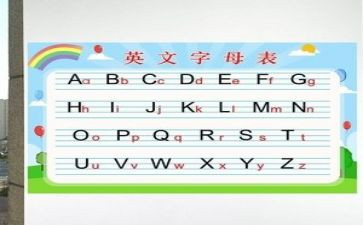上英语课教案通用8篇
在编写教案时,我们要充分利用多媒体技术,丰富教学手段,在编写教案时,我们要合理安排时间分配,淘范文小编今天就为您带来了上英语课教案通用8篇,相信一定会对你有所帮助。

上英语课教案篇1
教学准备
教学目标
teaching aims
knowledge a nd skills:
ge t to know about
some reading
the ss’ interest and love for learning about foreign
strategy and method:
the students’fast-reading
the students’ ability to co operate with
教学重难点
main points :
introduce the information of canada to the
the students’reading ability —skimming,and listening ability
difficult point :
learn different reading skil ls for different reading
teaching procedures and ways
教学过程
readin g&greeting (2`)
leading in and warming up (5`)
talk: do you like to go sightseeing?
which country do you like to visit?
what can you see in these countries?
fast- reading (10`)
is“the true north”?
it refers to “the cross-canada ”
the route of the two girls’ traveling across canada
careful- reading(t&f) (15`)
consoli dation (7`)
listening & summary
fill in the blank and retell the story
课后习题
homework
surf the internet to find more information about canada
chalkboard designing
unit5canada – the “the true north”
-----a thip “ on the true north”
vancouver rocky mountains thunder bay
calgary lake superior toronto
上英语课教案篇2
人教版(pep)小学英语三年级上册第一单元教学建议及训练要点
一、教学目标
1、能听懂、会说hello / / ’m…… what’s your name? my name’s …并能在实际情景中运用。
2、能够听说、认读crayon, pencil, pen, eraser, ruler, pencil-case, book, sharpener, bag, 、能听懂所接触的指示语,并能按照指令做出相应的动作。
二、教学重难点
1、听懂、会说what’s your name? my name’s…i’m…
2、认读crayon , pencil , pen, eraser, ruler, pencil-case, book, sharpener, bag, school.三、教学建议
1、由于学生是初次英语,可以从学生已知或会说的词汇tv、cd、vcd、dcd、ok!出发,来激发学生学习英语的兴趣;
2、在教授关于文具的单词时,可以借助学生的文具和教师卡交替使用,调动学生的学习积极性;
3、针对低段学生爱动的特点,let’s do部分可以适当多做几次,借以活跃课堂气氛;可以采用集体做,请部分学生上台来做的方式进行;
4、let’s sing部分的作用也不容忽视,let’s sing部分开展得好,可以使枯燥的语言学习变得更有意义;
5、鉴于低段学生注意力容易分散的特点,课堂上及时的评价鼓励,显得非常重要。
四、训练要点
一、选择题
1、hello!
?what’s your name?
’s you name? name’s mike3、good-bye!
, miss , i’m chengjie4、hello!i’m wu !!i’m 、nice to meet you._________________
to meet you ,
二、连线题
1、铅笔pencil-case2、钢笔bag3、尺子book4、橡皮ruler5、书包eraser6、文具盒pen7、书pencil8、什么what
9.学生sharpener10、削笔机school
上英语课教案篇3
目标:能够正确说出自己的性别。
乐意积极参与英语活动。
准备:男孩、女孩的胸饰
请大班幼儿表演(2名),枪、洋娃娃
进程:
1、师生问好
2、请大班幼儿表演
男孩(师给他穿裙子):no,no, i’m a boy
女孩(师给枪他玩):no,no, i’m a girl
请小朋友说出男孩与女孩的区别,教师在黑板上画下来
oys have short hair, wear trousers , like gun
girls usualy have long hair , wear skirt ,like doll
3、集体练习
t: is he a girl?
s: no (回答原因)
t: is she a boy ?
s:no(回答原因)
练习发音:boy girl
4、游戏巩固练习
①谁的反应快?boys stand up! girls stand up!
②找自己的图标
教师请幼儿上来找自己的图标,并大声说i’m a boy/girl
5、结束
boys and girls stand in a line 下楼做游戏
幼儿园英语教案-《i’m a boy/girl》反思:
幼儿在学习英语的过程中是以兴趣为主体,游戏为载体的。所以在整个教学活动中我遵守三个“动态”教学的原则,即趣味性原则、活动性原则、变化性原则。幼儿是活泼好动、爱唱、爱跳的,他们学习的动力来源于有趣的教学内容和富有吸引力的活动形式,英语口语课的“动态”教学,目的就是要让幼儿在无任何心理压力的状态下轻松愉快地学习,并且乐在其中。
第一环节: 我充分利用中班幼儿的年龄特点:喜爱模仿。在这一引导部分注入了无意识注意,使幼儿在游戏中能听熟所要学习的短句。
第二环节:出示图片让幼儿巩固以前所认识的老朋友,但我并没有单纯的出示,而是用沙包投掷的方式使孩子们注意力更集中,更觉得有趣。在动静的交替变换中,有意识记忆得高了提高。这是变化性原则的体现。
第三环节:重点环节。在和孩子们的相处中,我发现孩子们对机器人特别感兴趣,所以就设计了这个游戏活动对幼儿所要学习的短句进行教学。在教学过程中,我不停地制造一些小麻烦,比如:突然头不能动了!这就势必将本来已经念疲惫的的幼儿的兴致又提起来了,使幼儿能够体验到一浪更比一浪高的头脑风暴。
第四环节:结束环节。我带领幼儿唱唱、跳跳,这个英文歌曲是先动后静的,我利用幼儿“爱动”的天性,在不知不觉中将幼儿的活动量及心脏跳动的次数慢慢的降低,但又不失趣味,使他们始终处在一种游戏的状态。这是趣味性原则的体现。
上英语课教案篇4
unit 16 leon 63
hello, everyone.today i’m very pleased to have an opportunity to talk about some of my teaching ideas.my topic is life in the oceans taken from leon 63 of unit 16 in sefc(2).it is made up of four parts.
part 1 my understanding of this leon
the analysis of the teaching material:
this leon is a reading paage.it plays a very important part in the english teaching of this unit.leon 62 and leon 63 are a whole unit.by studying leon 63, ss can improve their reading ability, learn more about the sea and the life in the oceans.at the same time, we should get the students to understand some difficult sentences to comprehend the paage better.the ss should do some listening, speaking and writing, too.of course, the ss should receive some moral education.let the ss understand the sea better, love the sea and save the sea and the life of the sea.
teaching aims:
1.knowledge aim: understand the main idea of the text.
2.ability aim: retell the text in their own words.
3.emotional aim: make the ss love the life of the sea and do something to stop it being polluted.
key points / teaching important points:
how to understand the text better.
teaching difficult points:
1.use your own words to retell the text.
2.discu the pollution of the sea and how to save the sea.
something about the ss:
1.the ss have known something about the sea and sea life through the internet and other ways.
2.they are lack of vocabulary.
3.they don’t often use english to expre themselves and communicate with others.
4.some ss are not active in the cla because they are afraid of making mistakes.
part 2 my teaching theories, methods and aids
before dealing with this leon, i’ll do my best to carry out the following theories: make the ss the real masters in cla while the teacher himself acts as director; combine the language structures with the language functions; let the students receive some moral education while they are learning the english language.
teaching method:
double activities teaching method
question-and-answer activity teaching method
watch-and-listen activity
free discuion method
pair work or individual work method
teaching aids:
1.a projector
2.a tape recorder
3.multimedia
4.the blackboard
part 3.teaching steps / procedures
i have designed the following steps to train their ability of listening, speaking, reading and writing, especially reading ability.
the entire steps are:
greetings, revision, lead-in and preparation for reading, fast reading(scanning), listening, intensive reading, preparation for details of the text, consolidation, discuion, homework
step 1 greetings
greet the whole cla as usual.
step 2.revision
1.ask students some questions to revise the last leon(show them on the screen).
a.how much salt do the oceans contain per thousand parts of water?(35 parts of salt.3.5% by weight)
b.what is coral? why are corals not found in deep water?
c.why is the dead sea called the dead sea?
2.check the homework(made a survey about the sea or sea life by surfing the internet or asking for help from other people).through this part we can consolidate what they studied yesterday, communicate with others about their survery results and prepare for the new leon.
step 3.lead-in and preparation for reading
show them some pictures and let them talk each other, and then use the pictures about sea and life in the oceans to learn new words, for example, antarctica, huge whale, sperm whale, squid and so on.
purpose: arouse the students’ interest of study.
bring in new subject: life in the oceans.
step 4.fast reading
read the paage as quickly as they can.i show the questions on the screen and let them get the main idea of each paragraph:
1.why can living things live in such oceans around the antarctica?
2.what does the whale feed on?
3.what is the difference between the sperm whale and other whales?
method: read the text individually, use question—and—answer activity.
purpose: improve the students’ reading ability.
understand the general idea of each paragraph.
step 5.listening(book closed)
1.listen to the tape then do an exercise(wb page 90, part 1)
2.true or false exercise.(on the screen)
train the ss’ listening ability and prepare for later exercises.
step 6.intensive reading
read the paage carefully again and answer some detailed questions on the screen.
1.how much does a whale eat at a time?
2.do all the whales feed on small fish?
3.how deep can a sperm whale dive?
it is also called depth reading or study reading.it means reading for detailed information.
purpose: further understand the text (train further reading ability) to find out some different sentences and details of the text.
step 7.preparation for details of the text on the screen
1....its heart slows to half its normal speed.
slow-v.to become / make slower.
2....using sound wave
present participle used as adverbial.
3.provide sth.for sb.
provide sb.with sth.
4.at a time: each time
5.grow to a length of...
purpose: train the ss’ ability of understanding and using laguage.
step 8.consolidation
1.find out the topic sentences.
2.retell the paage according to the topic sentences.
purpose: i want to know if my students understand the whole text really and if they master what i mean to tell them in this cla.what’s more, i want to let them have the ability of introducing and analyzing expreion.at the same time, i will write down the topic sentences on the blackboard according to what the students find, so they can retell it easily.
step 9.discuion
show them some pictures about the polluted sea and many living things which are in danger and ask them: what are their opinions about it? in order to let them have free choice, i give them another topic: the sea is being polluted.what should they do?
purpose: i mean to give them emotional education.i give them multi-media pictures to arouse their interest of study and their love for life.i mean to make them realize: the sea is in danger!
i teach them to do their best to help it and do something from now on.everyone should do something to love and protect our home.
step 10.homework
write an article saving the sea.i want to improve the ability of their writing.at the same time, train the ability of do-it-yourself and looking up the information by themseleves.
part 4.blackboard design
unit 16 leon 63
topic sentences:
1.some living things can live in antarctica.(what)
2.the whale feeds on small fish.(what)
3.the sperm whale feeds on squid.(difference)
discuion:
1.the whales are in danger.what’s your opinion about it?
2.the sea is being polluted.what should we do?
in my opinion, the blackboard design can reflect the teacher’s ability of mastering the text and leading the students to master the text easily.
in this text, the design is not easy to write.i write the topic sentences on the blackboard in order to tell the students that this is of the importance in this cla.the discuion is of the difficulty.
i want to make the design inductive, instructive and artistic.
上英语课教案篇5
【教学过程】
热身:
1) 教师和学生用所学的日常用语打招呼hello!hi!nice to meet you。 what’s your name?
how old are you? what is it?
2) 学生之间用日常用语打招呼。
导入新知识:
1) 教师呈现小鸭子图的一部分(一只小鸭子的头),问:what’s this?多数学生可以答出:it’s a duck。
2) 呈现图的整体 :四只鸭子, 教师自问自答: what are they? they are ducks。教师带读“what are they?” 强调they的发音要咬舌头。
3) 引导学生看图用what are they?提问,教师回答:they are ducks。强调ducks中[s]的音。小组进行问答练习。
4) 教师将几本书卷起来拿在手中引导学生用what are they?提问,然后找学生回答,教师要适时提醒book—books的演变。
5) 教师出示图片:4 ducks、5 desks、3 bikes、3 clocks、 7 books。学生两人一组用what are they? they are…进行问答练习。
6) 请尽可能多的同学到前面作展示,教师要及时纠正学生对话中关于名词复数变化的发音。
3、 会话教学
1) 教师出示learn to say部分的视频课件, 学生观看,了解对话情景。
2) 教师提问:are they ducks? are they geese? are they swans?学生回答:yes,they are。或no, they aren’t
3) 播放对话跟读课件,学生逐句重复听到的句子。教师适时强调are they…?读升调。
4) 学生之间进行对话练习:一个人扮演儿子,一个人扮演爸爸。
5) 请几组学生到前面展示。
4、趣味操练:
1)学生将课前准备的let’s practise部分的图片排列在桌子上,问:what are they?教师说:they are … 学生迅速选出有关内容的图片并举起, 比比看, 谁的反应快。
2)小组进行以上活动。
请一位同学选择任意一张图片到前面,不让其他同学看到图片内容,提问:what are they?班内其他同学用they are…猜猜图片内容。猜对的同学可以到前面来请班里的同学猜自己的卡片。此活动也可以以小组为单位进行。
【板书设计】
lesson 1
what are they? they’re (let’s practise部分的图片,下方标有相应的单词, 复数变化)
duck + s = ducks cake + s = cakes
上英语课教案篇6
活动目标:
1、引导并鼓励幼儿在感受不同类型音乐的基础上大胆地表现出自己认为的善与恶的形象。
2、通过活动,引导幼儿学习新授单词:wolf。
3、引导幼儿体验英语活动带来的乐趣。
活动准备:
情景创设(森林)、小兔的头饰若干、大灰狼的衣服、磁带
活动过程:
(一)情景创设(复习部分动物单词)
出示小兔的头饰,who is it ? 今天我们就来做rabbit做游戏,(幼儿与教师一起带头饰)
who are you ?
we are rabbits. (音乐……):今天我们又要来做游戏了,are you happy?
( it’s carrot …… go go go ——carrot carrot eat eat eat.
it’s grass ……go go go ——grass grass eat eat eat.
that’s mushroom …… ——mushroom mushroom eat eat eat
(二)新授单词wolf
(沉重地音乐……)guess guess ,who will coming?
(tiger 、lion、elephant、bear……)
look,who is coming?
it’s a wolf.
纠正幼儿对新单词的发音。
wolf 长得什么样?是怎么走路的?
幼儿跟着音乐学wolf。wolf wolf 大灰狼……
(三)game
?wolf and rabbit .》
(欢快地音乐……)rabbit rabbit jump jump jump.……
(沉重地音乐……)who is coming ? wolf ,wolf is coming .……rabbit ,we are go home!……wolf go back!
(重复一次)
(欢快地音乐……赶走大灰狼)
上英语课教案篇7
教学目标
1.学会词汇learnt these dancer
2.能听懂会说unit 1这篇对话。
3.学习目标语句:did your grandma learn english? yes, she did. /no, she didn’t.
4.能口头运用did your grandma learn english?这类语句询问过去的行为,并能口头运用yes, she did./no, she didn’t.回答。
教学重点:学会词汇learnt these dancer
教学难点:运用目标语句she danced in lots of chinese cities .did she learn any foreign languages? yes, she did. /no, she didn’t. he was a dancer .谈论过去。
教学过程:
step1.预习检测
根据所给单词,补全句子。
1. sam wasxxxxthen.now he isxxxxx.(short tall)
2. my motherxxx xxxxxxthen.now shexxx xxx.(old young)
step2.合作探究,学习课文。
1.听课文录音,理解课文大意。
2.小组内学习课文。
3.师解决疑惑。
4.学生自己读课文,找出下面问题的答案。
who are they ?
why is she wearing these clothes?
did she learn english?
step3.巩固练习
完成课本第三部分。
上英语课教案篇8
一、活动目标:
1.让幼儿初步认识单词tortosefox并能正确的发音。
2.培养幼儿的口语表达能力和模仿手形讲述的能力。
3.培养幼儿遇到困难要善于动脑筋,努力解决问题。
二、活动准备:
图片6个、大树、小河。
三、活动过程:
1、组织好幼儿,准备活动。
教师向幼儿问好:hello,goodmorningboysandgirls.
2、出示乌龟的图片:let’shavealook!itisatortoise!反复教幼儿单词tortose的发音。再出示狐狸的图片,教幼儿单词fox的发音。
3、在幼儿初步认识的基础torosefox后,教师讲述故事《聪明的乌龟》并展示手形进行讲述。讲完故事后,教师向幼儿提问,使幼儿明白故事的意义。教师利用手形展示在讲述一遍故事。幼儿相互之间模仿老师手形讲述故事。
4、游戏:奇妙的口袋。教师在口袋里放入fox和tortose的图片个5个,然后请幼儿上来摸摸,同时其它其他幼儿一起念:口袋里的东西多又多,请你伸手来摸一摸,摸出来看看是什么?这时就请幼儿用英语说出自己摸的是是什么。
5、教师小结,带领幼儿出活动室,结束活动。


